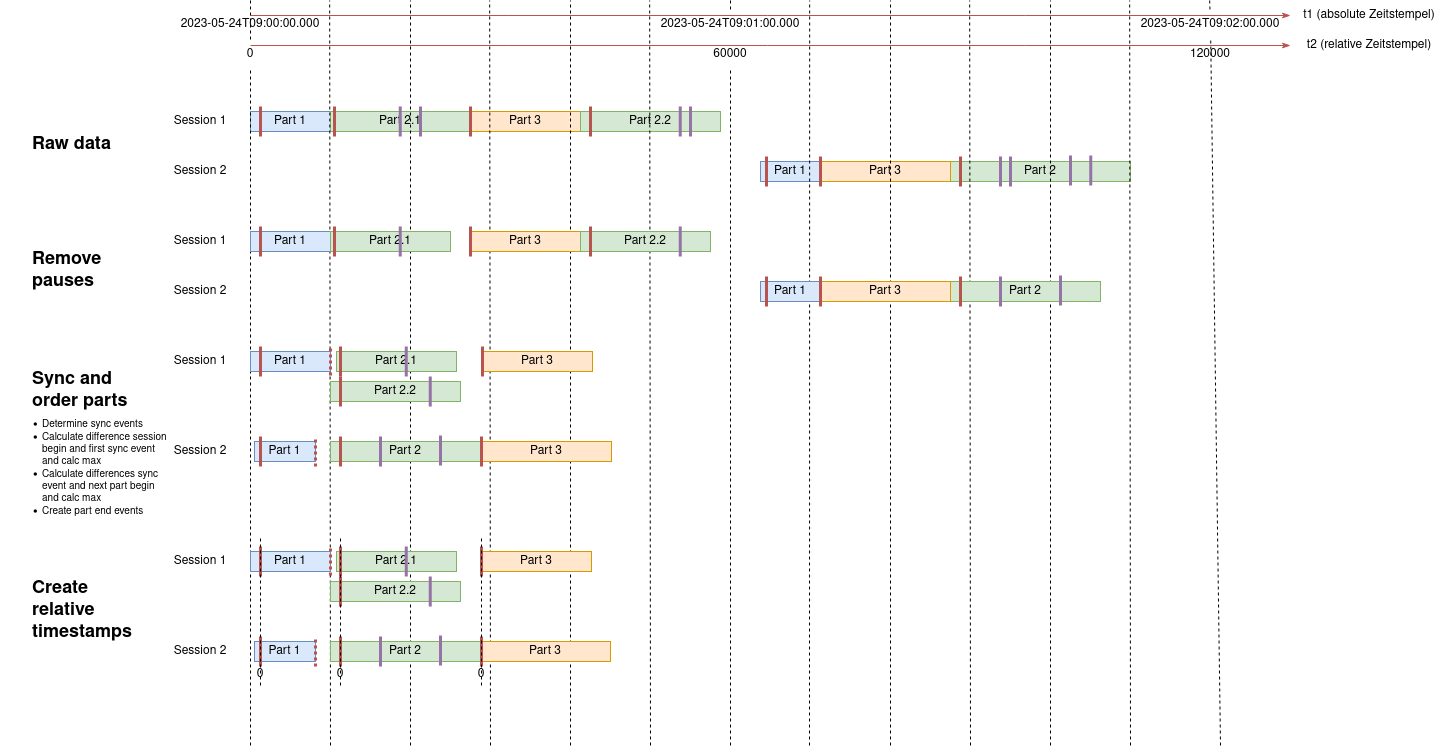Data preprocessing and synchronisation for playback projects
Note: Data preprocessing with session synchronization works only for sessions of one realisation, not across realisations.
Problem
In playback studies, the sessions usually take place asynchronously. In order to be able to compare the data of all sessions, the parts must be exactly superimposed before resampling. This article explains the process by which the sessions are (automatically) synchronized. The following circumstances must be taken into account:
- A part in Session 1 is rarely exactly the same length as the same part in Session 2.
- If a part contains a pausable medium, there may be periods during the pause in which no data are generated.
- If randomization is used in the study, Parts may be duplicated or missing. These data must also be comparable.
Synchronization process
The synchronization happens in several steps, which are shown graphically in two example sessions here.
- The raw data:
- The sessions have taken place one after the other and the raw data is stored. The boundary lines within a part mark start and pause events of a played medium. Between the boundaries, the medium is therefore paused, i.e. the data collected during this period, if any, is no longer medium-related and thus negligible for the study.
- Synchronization events are generated. These correspond to the start event of a medium, e.g. the playing of a video.
- The pauses within the parts are skipped for resampling.
- This may cause pauses between the parts, because sections have been removed. However, the start event of the next part remains in place and is not moved with it.
- The sessions are synchronized.
- Duplicated parts within a session are bundled on top of each other.
- The synchronization events of all sessions are superimposed. Thereby all parts align themselves after the one, which had the most "idle time" before the first sync event. So again this can cause gaps.
- Part-end events are created.
- Relative timestamps are created. There are 2 types of relative timestamps:
- Session-related relative timestamps (Session timestamps).
- Part-related relative timestamp (Part timestamp)
Synchronisierung bei Live-Studien
In Live Studien können die Sessions auch versetzt beginnen (z.B. Wenn ein Teilnehmer später dazustößt oder leichte Latenzen auftreten). Die Part-Start Events dürfen in diesem Fall allerdings nicht synchronisiert werden, da die Daten sonst verschoben werden würden. In Live Studien muss also der absolute Zeitstempel das Maß bestimmen, also ein konkreter Zeitpunkt während der Studie, oder alternativ ein von den Durchführenden ausgehendes konkretes Event.
